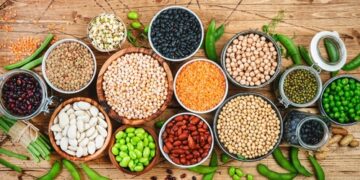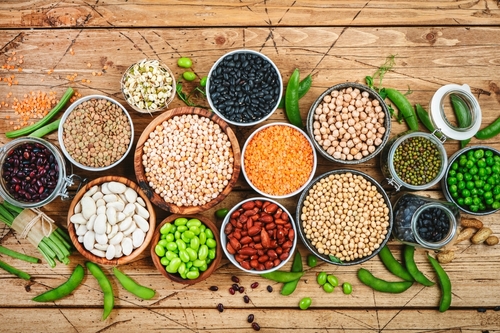Protein Without the Usual Suspects
When people think plant-based protein, the first words out of their mouths are usually tofu and tempeh. Fair enough—they’re solid staples. But relying solely on soy products means missing out on an entire garden of powerful, protein-rich options. From lentils and chickpeas to quinoa and hemp seeds, the world of plant-based proteins is far more diverse—and flavorful—than it often gets credit for.
The good news? You don’t need to be fully plant-based to enjoy the benefits. Integrating more of these ingredients into your meals can lighten the load on your digestion, support your heart, and even save money in the long run.
Ad Banner #1
Placeholder for the first ad.
Legumes: The Underrated Powerhouses
Let’s start with the humble legume family—beans, peas, and lentils. These are foundational in plant-based nutrition for good reason. They’re packed with protein, fiber, iron, folate, and slow-burning carbohydrates that keep energy levels steady. They also happen to be incredibly affordable and shelf-stable.
-
Lentils cook in under 30 minutes and adapt to everything from stews to salads to veggie burgers.
-
Chickpeas (aka garbanzo beans) are the base for creamy hummus, crispy roasted snacks, and rich curries.
-
Black beans add depth to bowls and wraps, while split peas make for soothing, hearty soups.
Pair legumes with whole grains to unlock a full profile of essential amino acids, no supplements or powders needed.
Grains That Do More Than Fill
Grains are often lumped into the carb category, but several offer impressive protein content alongside fiber and minerals.
-
Quinoa is one of the rare plant-based foods that’s a complete protein—meaning it contains all nine essential amino acids. It’s fluffy, fast-cooking, and works hot or cold.
-
Amaranth and teff are lesser-known ancient grains with notable protein levels and a deep, nutty flavor.
-
Farro and bulgur bring chew and substance, especially when tossed with roasted vegetables or herbs.
These grains don’t just support protein needs—they round out meals with texture and satisfaction that refined grains can’t touch.
Seeds That Punch Above Their Weight
Seeds are small, but don’t underestimate their nutritional muscle. Just a spoonful or two can add plant protein, omega-3 fats, iron, and magnesium to your meal.
-
Hemp seeds offer around 10 grams of protein per 3-tablespoon serving and blend seamlessly into smoothies, oatmeal, or grain bowls.
-
Chia seeds expand in liquid and make for filling puddings or a boost to your morning yogurt.
-
Pumpkin seeds (pepitas) are great toasted on salads or blended into sauces like pesto.
Try storing them in glass jars on your counter—you’ll be more likely to use them if they’re visible and within reach.
Ad Banner #2
Placeholder for the second ad.
Innovations Worth Trying
The plant-based protein aisle has grown beyond old-school soy patties. Today’s options are more creative, better textured, and often cleaner in terms of ingredients.
Products made from pea protein, mung beans, and even fermented grains are showing up in everything from protein powders to dairy-free yogurts and plant-based meats. Some mimic the taste and texture of meat, while others keep it simple and just pack a nutritional punch.
While not every product is perfect (some are still highly processed or salt-heavy), many offer a convenient way to round out meals—especially for those transitioning to more plant-forward eating.
Just remember: packaged doesn’t always mean less wholesome. Read labels with curiosity, not fear. Choose options with minimal ingredients and recognizable names, and balance them with plenty of fresh, whole foods.
Building Balanced, Protein-Rich Meals
A fully plant-based meal doesn’t need to center around a single protein source. Often, it’s the combination that matters. A grain bowl with black beans, roasted sweet potatoes, sautéed greens, and tahini drizzle offers complete satisfaction—flavor, texture, and amino acids included.
Here’s a simple formula:
-
1 part protein (legumes, seeds, or a high-protein grain)
-
1–2 parts vegetables (fresh, roasted, or lightly cooked)
-
A healthy fat (olive oil, tahini, avocado, seeds)
-
Herbs, spices, or a tangy dressing to tie it all together
This isn’t just plant-based eating—it’s plant-powered nourishment.
A New Way to Think About Protein
Protein doesn’t have to mean meat or a block of tofu. It can be a blend of legumes and grains, a sprinkle of seeds, a creative product made from peas or lentils. The variety is what makes it sustainable, satisfying, and flavorful.
By stepping outside the usual soy box, you open the door to a world of nutrient-dense, affordable, and delicious possibilities. One bowl, one bite, one blend at a time—you’ll start to feel the difference.



























